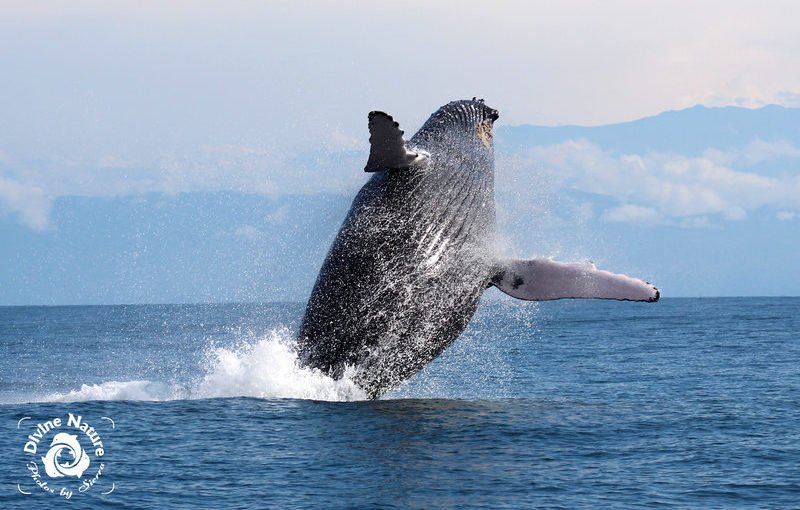More Than Just Fishing – A Humpback Whale Takes Center Stage on Costa Rica’s Golfo Dulce
And even more amazing is the baby humpback mimicking her with a breach of it’s own! (both videos below)
The Golfo Dulce in Costa Rica’s Southern Osa Peninsula is the largest marine area of responsible fishing in Central America (established with lobbying by FECOP learn more). It is home to countless inshore fish species like prized roosterfish and cubera snapper but the largest creature to visit these waters makes her presence known twice a year. The gentle warm waters of Costa Rica’s crown jewel, the Golfo Dulce provide a calm sanctuary for these gentle giants to escape the pressures of the open ocean so they may give birth.
Tourists arriving between July and November are almost sure to witness these amazing creatures engaging in acrobatic breaches with geyser-like sprays of water shooting through their spiracles and leaving their signature misty haze resting in the air. These whales put on not only a breathtaking display for the eyes, but for the “ears” as well and sometimes their songs can be heard vibrating through the boat hull below.
The Humpback’s Journey – The World’s Longest Mammal Migration
These giants travel with purpose and their migration is the longest of any mammal in the world, spanning a distance of up to 5,160 miles (8,300 km). These whales travel fast too with one and one recorded by NOAA making a 3,000 mile (4,830 km) trip in only 36 days. Once the whales get to Costa Rica, it’s not just about vacationing in the sun. Humpbacks congregate together and use the months that they are here to give birth and rear their young. The temperate waters are thought to be ideal for the growth of baby whales, even though they can already be 13-16 feet (4-5 m) long and weigh up to 1 ton (907 kg) at birth.
Whale Migration Facts
- The Antarctic migration has the most whales and peak season is between August and October. During this time of year, your odds of seeing a humpback whale are good.
- Some of the Alaska/California whales winter in Hawaii and other places to the north so their numbers are fewer in Costa Rica. This means that it is harder to see humpback whales during the December to April season, but not impossible. Whales are sometimes spotted on tours, but it is more likely to see dolphins, turtles, and sea birds.
- There typically aren’t any humpbacks to see from mid-April to mid-July.
- Humpbacks in the northern Atlantic Ocean also migrate near Costa Rica (on the Caribbean Coast) but are not found in great numbers so whale watching isn’t as popular as on the Pacific.
Videos of Mother and Baby Humpback Whale Breaching in Costa Rica’s Golfo Dulce
Enjoy this video of a picturesque breech on Costa Rica’s Golfo Dulce
Not to be outdone, the baby humpback follows up with a breach of it’s own right after mom! Take a look
Many people visit the Golfo Dulce for a taste of Costa Rica’s legendary fishing, but are completely blown away by the unbelievable diversity of marine life inshore as well as the abundant wildlife on dry land waiting to be discovered. The Osa Peninsula is definitely a bucket list destination for those who appreciate not only sport fishing, but mother nature at her finest.
You May Also Like:
Orca’s Spotted in the Golfo Dulce
Costa Rica – It’s Not Always About the Fish
Lost Sea Lion Visits the Golfo Dulce
Post Covid Fishing in Costa Rica
Subscribe to Our Mailing List
[yikes-mailchimp form=”1″]





















